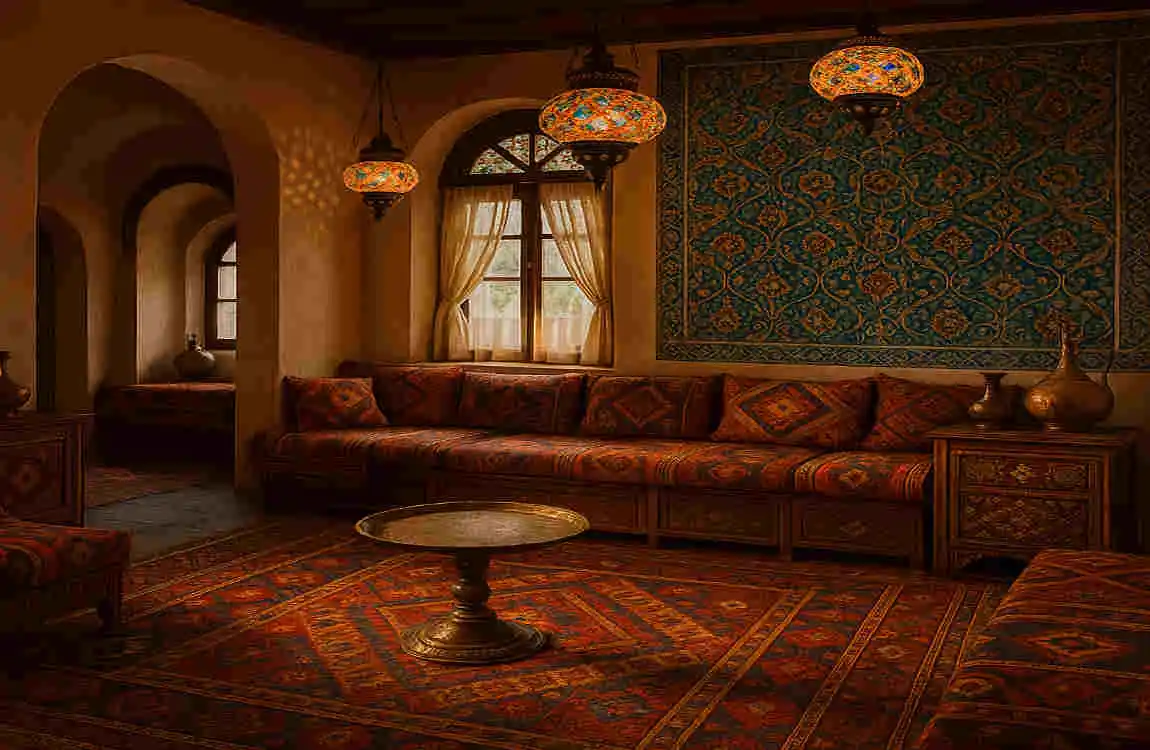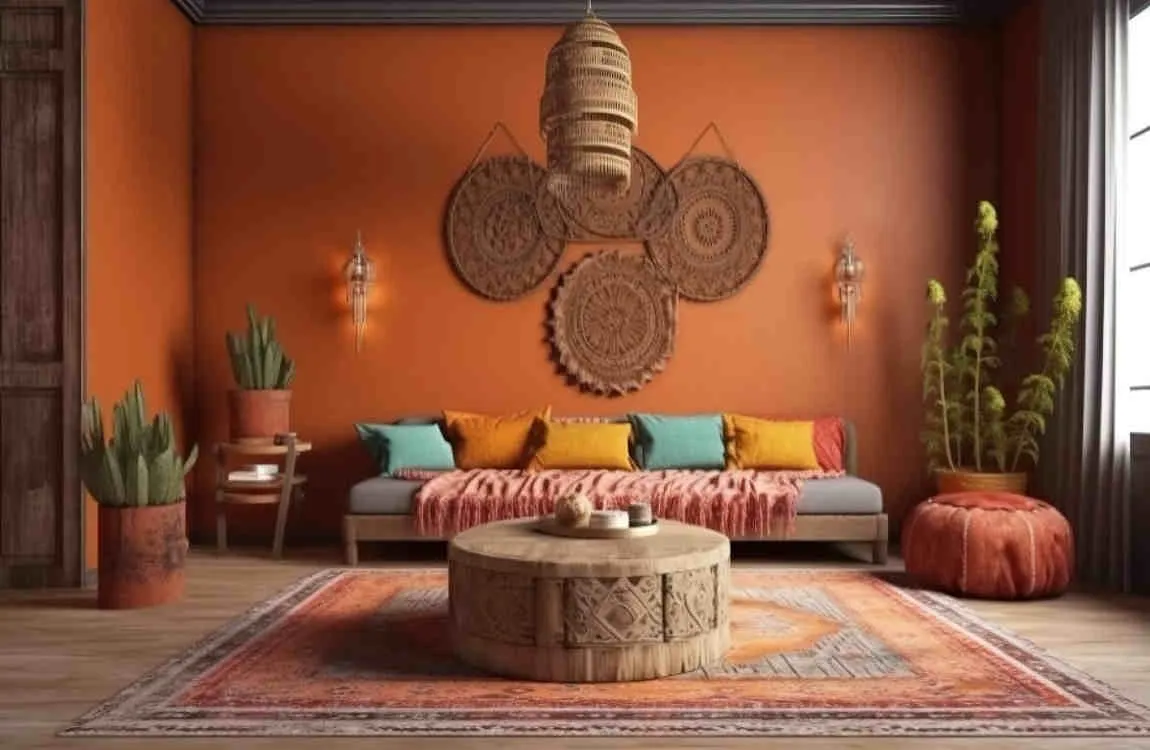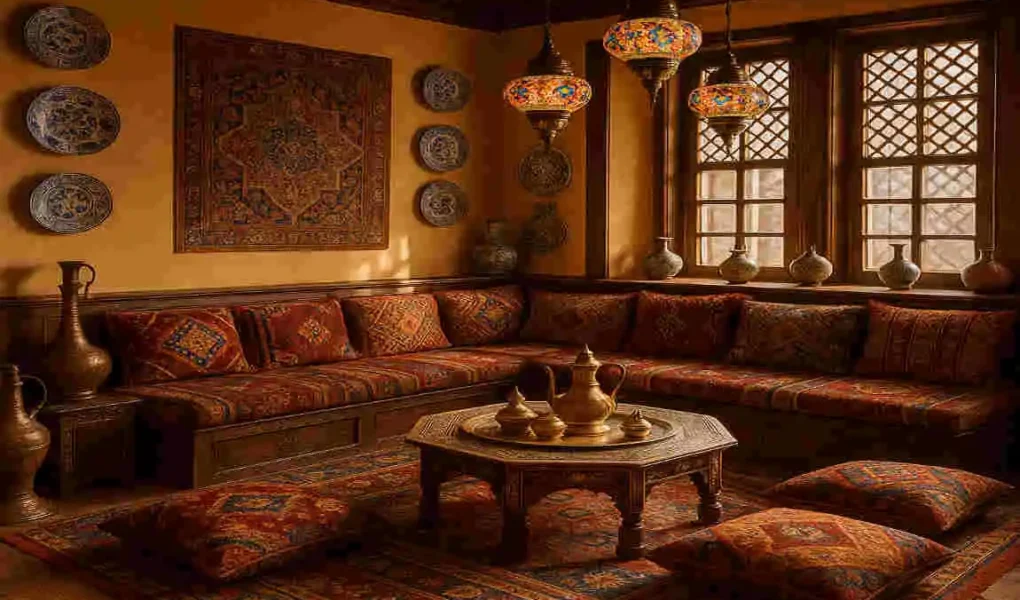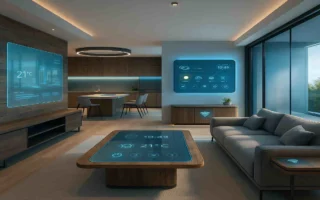Turkish house interior design is a captivating blend of cultural heritage, elegance, and modern functionality. Originating from the rich tapestry of the Ottoman Empire, this style draws inspiration from various historical influences, including Byzantine and Mediterranean aesthetics. As global interest in diverse interior styles grows, Turkish interiors have captured the hearts of many with their vibrant patterns, luxurious textures, and harmonious environments.
Understanding the Essence of Turkish House Interior Design

Cultural Roots of Turkish Design
Turkish interior design is deeply rooted in its history, shaped by centuries of cultural exchange and artistic evolution. The Ottoman Empire left a lasting legacy in architecture and design, blending influences from various cultures across Europe, Asia, and the Middle East. This unique combination creates a design style that is both rich in history and visually stunning.
Beauty Meets Functionality
One of the most compelling aspects of Turkish design is its balance between beauty and functionality. While Turkish interiors are undeniably beautiful, they are also practical and functional. This design philosophy ensures that every element not only enhances the aesthetic appeal but also serves a purpose in daily living.
Key Components of Turkish Design
The essence of Turkish design can be distilled into several key components:
- Traditional Patterns: Featuring intricate geometric shapes and floral designs, these patterns are prevalent in textiles, tiles, and ceramics.
- Vibrant Colors: Earthy tones, such as beige and brown, are often complemented by vibrant accents like turquoise, red, and gold.
- Natural Materials: Wood, stone, and metalwork play a significant role, offering a blend of rustic charm and sophistication.
- Artisanal Craftsmanship: Handcrafted items reflect the skill and artistry of Turkish artisans, adding authenticity to the design.
Creating an Inviting Atmosphere
A successful Turkish interior aims to create a warm and welcoming environment. Achieving this often involves utilizing open layouts, maximizing natural light, and seamlessly connecting indoor and outdoor spaces. This approach not only enhances the home’s aesthetic but also promotes a sense of tranquility and comfort.
Key Elements of Turkish House Interior Design

Color Palette
When it comes to color, the Turkish design ethos embraces earthy base tones complemented by vibrant accents. Here’s a breakdown of the essential colors to consider:
- Earthy Tones: Beige, taupe, and soft browns create a soothing backdrop.
- Accent Colors: Turquoise, deep reds, and gold add energy and vibrancy to the space.
Using a balanced color palette can evoke a sense of warmth and liveliness, making your home feel both inviting and stylish.
Textiles and Fabrics
Textiles are at the heart of Turkish interior design. The use of rich fabrics, such as velvet and silk, along with kilim rugs and intricately embroidered cushions, showcases a variety of textures. Here are some textiles to incorporate:
- Kilim Rugs: These traditional rugs add warmth and character to any room.
- Embroidered Cushions: Perfect for layering on sofas or beds, they bring color and comfort.
Furniture Style
Turkish furniture often features low seating arrangements and lightweight wood pieces. Look for furniture that embodies clean lines yet maintains ornate details reminiscent of Ottoman aesthetics. This style encourages a relaxed atmosphere, perfect for social gatherings or family time.
Patterns and Motifs
The use of patterns is a hallmark of Turkish design. Geometric shapes and floral designs can be found in various elements, including:
- Tiles: Intricate tile work often adorns floors and walls, providing a stunning visual impact.
- Ceramics: Hand-painted ceramics showcase traditional motifs and vibrant colors.
Materials
Natural materials are crucial in Turkish design, emphasizing both rustic and refined qualities. Key materials include:
- Wood: Used in furniture and decorative elements, it adds warmth and character.
- Stone: Often featured in architecture, it creates a sense of permanence and stability.
- Metalwork: Handcrafted metal pieces add an artisanal touch to the design.
Lighting
Lighting plays a pivotal role in creating ambiance. Artistic lanterns and ornate lamps not only serve functional purposes but also act as decorative focal points. Opt for warm, ambient lighting to create a cozy atmosphere, a characteristic often found in traditional Turkish interiors.
Accessories and Decorative Accents
To complete the look, incorporate accessories that reflect the rich craftsmanship of Turkey. Consider adding:
- Handcrafted Ceramics: Beautifully designed ceramics can serve as both functional and decorative pieces, adding a touch of elegance to any space.
- Metallic Accents: Items like trays and candle holders add a touch of elegance.
Practical Turkish Interior Design Tips to Transform Your Space

Start with a Neutral Base
Establishing a warm, earthy-toned background on your walls and floors creates a perfect canvas for vibrant Turkish accents. This neutral base allows bold colors to shine without overwhelming the space.
Incorporate Turkish Rugs and Textiles
When selecting Turkish rugs, consider size and placement. Kilim rugs are versatile and can be layered under furniture for added texture and visual interest. Pair them with embroidered cushions and throws to create a cozy, inviting atmosphere.
Use Statement Lighting Fixtures
Turkish lamps and lanterns are not just functional; they make stunning statement pieces. Choose fixtures that reflect traditional designs, adding a layer of richness to your decor.
Add Artisanal Touches
Display handcrafted ceramics and metal trays to introduce authenticity into your home. These unique pieces tell a story and connect your space to Turkish culture.
Blend Traditional and Modern
Mixing contemporary furniture with bold Turkish patterns can create a balanced look. For instance, pair sleek, modern chairs with a colorful Turkish textile or a kilim rug for an exciting contrast.
Create Cozy Nooks
Design intimate seating areas with floor cushions and low tables. This arrangement fosters relaxation and social interaction, reflecting the warm hospitality that is characteristic of Turkish culture.
Harness Natural Light
Maximize natural light by using sheer curtains and large windows. Skylights can also enhance light flow, creating a bright and airy environment that connects your indoor space with the outdoors.
Balance Bold Patterns with Simplicity
While Turkish design celebrates patterns, it’s essential to maintain balance. Layering patterns thoughtfully—using one bold design alongside simpler ones—can create visual harmony without overwhelming the senses.
Bring Nature Indoors
Incorporate plants and wooden elements to echo the natural beauty of the Anatolian landscape. This practice not only enhances the aesthetic but also promotes a sense of tranquility within your home.
Maintain Functionality
In Turkish design, every decorative piece should serve a purpose. Ensure that your accessories and furniture not only beautify your space but also enhance its functionality.
Benefits of Adopting Turkish Interior Design in Your Home

Luxurious Yet Comfortable Living
Turkish interior design creates an environment that feels both luxurious and comfortable. The balance of rich textures and inviting colors fosters a sense of relaxation.
Cultural and Historical Depth
Incorporating Turkish design elements adds cultural richness to your home. It tells a story of a storied history, allowing you to connect with tradition while enjoying modern comforts.
Versatile Style
The versatility of Turkish design makes it suitable for homes of various sizes and layouts. Whether you have a cozy apartment or a spacious house, Turkish elements can enhance your space.
Warm and Welcoming Atmosphere
A Turkish-inspired interior fosters a warm atmosphere that welcomes guests. This inviting environment encourages conversations and connections among family and friends.
Timeless Appeal
Turkish design seamlessly blends tradition with contemporary trends. Its timeless appeal ensures that your space remains stylish for years to come, making it a wise investment in your home.
Common Mistakes to Avoid When Designing a Turkish-Inspired Interior

Overuse of Bold Patterns
While patterns are essential in Turkish design, overloading your space with clashing designs can create visual chaos. Choose a few key patterns to highlight and balance them with solid colors.
Ignoring Balance
Striking a balance between ornate décor and minimalist space is crucial. Too much ornamentation can overwhelm a room, while too little can make it feel empty.
Choosing Cheap Materials
Opting for synthetic materials over authentic textiles can diminish the charm of your Turkish design. Invest in quality fabrics and natural elements to maintain authenticity.
Poor Lighting Choices
Neglecting lighting can hinder the beauty of your space. Ensure you choose lighting that highlights textures and colors, enhancing the overall aesthetic.
Neglecting Functionality
Remember that Turkish design values utility. Avoid prioritizing aesthetics over functionality; ensure every piece serves a purpose.
Turkish House Interior Design FAQ
What are the key features of Turkish interior design?
Turkish interior design is characterized by a mix of traditional and modern elements, including:
- Rich Colors: Warm, earthy tones like terracotta, ochre, and deep blues are commonly used, inspired by the Mediterranean landscape .
- Intricate Patterns: Vibrant kilim rugs, ornate tile work (known as “çini”), and detailed wood carvings are staples of Turkish interiors .
- Handmade Carpets and Rugs: Turkish homes often feature handmade carpets and rugs, which are both decorative and functional. Modern designs are now being incorporated into traditional weaving techniques .
- Oversized Windows and Nooks: Traditional Turkish homes often have large bay windows that create cozy nooks for lounging.
- Evil Eye Symbol: Many Turkish homes include the “evil eye” symbol, believed to protect against negative energy. This symbol is often incorporated into furniture and decor .
What materials are commonly used in Turkish interiors?
- Wood: Used for paneling, furniture, and decorative elements like doors and ceilings.
- Tiles: Ornate ceramic tiles, especially in kitchens and bathrooms, are a hallmark of Turkish design.
- Glass: Colored glass is often used in windows and lighting fixtures to add vibrancy .
- Textiles: Turkish interiors are rich in textiles, including kilim rugs, cushions, and curtains, which add warmth and texture.
How do traditional Turkish homes differ from modern ones?
- Traditional Homes: These often feature wide windows with metal bars, handmade carpets, floral wall motifs, and multipurpose rooms inspired by the nomadic lifestyle of early Turks .
- Modern Homes: While retaining traditional elements like rugs and patterns, modern Turkish interiors incorporate minimalist designs, neutral tones, and contemporary furniture for a more updated look.
What role do patterns and decorations play in Turkish design?
Patterns and decorations are central to Turkish interior design:
- Kilim Rugs: These feature geometric and symbolic patterns that tell stories or represent cultural motifs .
- Tile Work: Intricate tile designs are used to add depth and visual interest to walls, floors, and even ceilings .
- Small Details: Focusing on small decorative elements, such as vases, lamps, and wall art, enhances the overall aesthetic.
What lighting is used in Turkish interiors?
Lighting plays a significant role in Turkish design:
- Ambient Lighting: Soft, warm lighting is used to create a cozy atmosphere.
- Decorative Fixtures: Chandeliers and lamps with intricate designs, often made of colored glass, are popular.
- Natural Light: Large windows are a common feature, allowing natural light to flood the interiors.
How can I incorporate Turkish design into my home?
Here are some tips to bring Turkish design into your space:
- Use kilim rugs or Turkish carpets to add warmth and texture.
- Incorporate earthy tones like terracotta, ochre, and deep blue into your color palette .
- Add ornate tiles in kitchens or bathrooms for a traditional touch.
- Include decorative elements like the evil eye symbol, Turkish lamps, or handmade pottery.
- Create cozy nooks with cushions and low seating inspired by traditional Turkish lounging areas.




